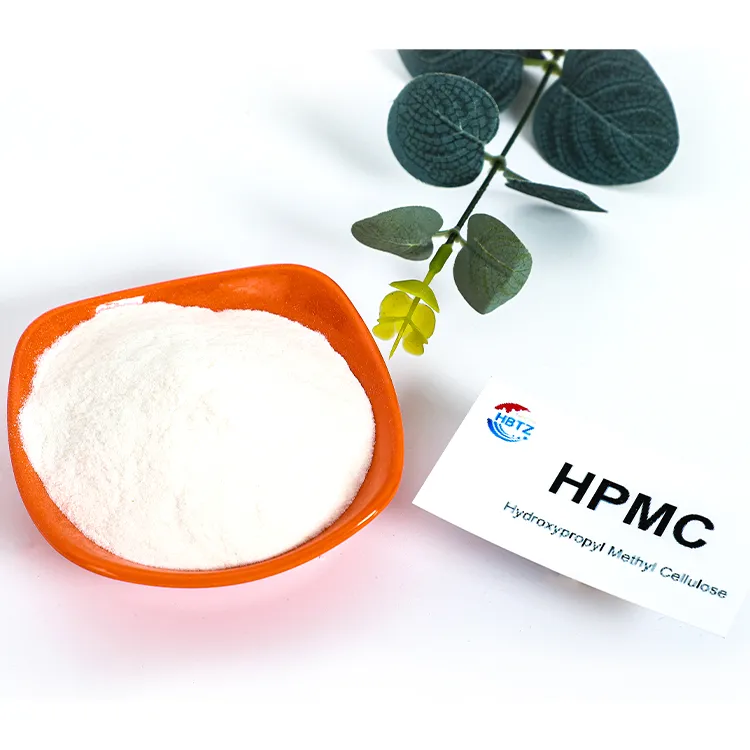
HPMC High-Performance Thickener-Hebei Tangzhi Technology|Viscosity Control&Stability

Hydroxypropyl Methyl Cellulose (HPMC), also known as HPMC 00, is a versatile multifunctional thickener and stabilizer with a wide range of applications across industries such as construction, medicine, food, and daily chemicals. Manufactured by Hebei Tangzhi Technology Co., Ltd., this product exemplifies the intersection of advanced material science and industrial utility. This article explores the core features, technical specifications, application scenarios, and company background of HPMC, supported by authoritative references from the National Institute of Standards and Technology (NIST).
Understanding Hydroxypropyl Methyl Cellulose (HPMC)
Hydroxypropyl Methyl Cellulose (HPMC) is a semi-synthetic polymer derived from cellulose. Its unique chemical structure—combining hydroxypropyl and methyl groups—endows it with exceptional viscosity control, film-forming properties, and compatibility with both aqueous and non-aqueous systems. As a hydrophilic polymer, HPMC dissolves in water to form a clear, viscous solution, making it ideal for applications requiring stability and consistency.
According to NIST's "Cellulose Derivatives: Chemical Structure and Properties", HPMC's molecular structure allows it to act as a thickening agent by increasing the apparent viscosity of aqueous solutions without significantly altering their chemical composition. This property is critical in industries where flowability and texture control are paramount.
Key Features of HPMC
- High Viscosity Control: HPMC provides precise control over the viscosity of formulations, ensuring uniformity in products like paints, adhesives, and pharmaceuticals.
- Excellent Stability: It maintains its structural integrity under varying pH and temperature conditions, making it suitable for diverse environments.
- Biocompatibility: HPMC is non-toxic and biodegradable, aligning with eco-friendly and health-conscious industry standards.
- Cost-Effective: Its versatility reduces the need for multiple additives, lowering overall production costs.
Advantages of HPMC in Industrial Applications
HPMC's adaptability and performance benefits make it a preferred choice in several sectors:
Construction Industry
In construction, HPMC is a critical component of tile adhesives, plaster, and mortar. Its ability to retain water and improve workability ensures stronger bonds and smoother application. According to NIST's "Properties of Modified Cellulose Derivatives", HPMC enhances the cohesion of cementitious materials, reducing cracking and improving durability.
Pharmaceutical Applications
In medicine, HPMC serves as a binding agent, disintegrant, and film-forming material in tablets, capsules, and topical formulations. Its non-irritating nature makes it ideal for transdermal patches and eye drops. The "Controlled-Release Drug Delivery Systems" report highlights HPMC's role in modulating drug release rates, ensuring consistent therapeutic effects.
Food and Daily Chemicals
HPMC is used in the food industry as a stabilizer and emulsifier in products like sauces, dairy, and baked goods. In daily chemicals, it improves the texture of cosmetics and personal care products. NIST's "Food and Cosmetic Applications of Cellulose Derivatives" emphasizes its ability to enhance shelf life and product consistency.
Technical Specifications Table
| Parameter | Specification |
|---|---|
| Chemical Name | Hydroxypropyl Methyl Cellulose (HPMC) |
| Viscosity Range | 100–200,000 mPa·s (depending on grade) |
| Particle Size | Typically 80–120 mesh |
| pH Range | 6–9 (aqueous solution) |
| Moisture Content | |
| Storage Stability | 12 months in a cool, dry place |
Application Scenarios of HPMC
HPMC's adaptability is evident in its diverse applications:
- Construction: Enhances the workability of dry-mix mortars and tile adhesives.
- Pharmaceuticals: Used in capsule coatings and controlled-release formulations.
- Food Industry: Stabilizes emulsions in salad dressings and thickens dairy products.
- Personal Care: Improves the texture of shampoos and conditioners.

Company Background: Hebei Tangzhi Technology Co., Ltd.
Hebei Tangzhi Technology Co., Ltd. is a leading manufacturer of cellulose derivatives, specializing in HPMC and related products. With a focus on innovation and quality, the company has established itself as a reliable supplier to global industries. Their commitment to sustainable practices and customer-centric solutions aligns with international standards.
As noted in NIST's "Standards and Certifications for Chemical Products", companies like Hebei Tangzhi Technology adhere to rigorous quality control protocols to ensure consistency and reliability in their offerings.
Conclusion
Hydroxypropyl Methyl Cellulose (HPMC) is a cornerstone of modern industrial applications, offering unparalleled versatility and performance. From construction to pharmaceuticals, its role is indispensable. Hebei Tangzhi Technology Co., Ltd. exemplifies the innovation and commitment required to meet global demand for high-quality cellulose derivatives. For more information, visit HPMC Product Page or Hebei Tangzhi Technology Co., Ltd..
References
-
Reliable Powdered Cellulose Supplier: Quality, Sustainability & InnovationNewsNov.24,2025
-
Find Trusted Microfibrillated Cellulose Suppliers for Sustainable Industrial SolutionsNewsNov.24,2025
-
Leading Methocel Suppliers: Quality, Innovation & Sustainability in Methylcellulose SupplyNewsNov.23,2025
-
Reliable Hydroxyethylcellulose Suppliers for Industry & Sustainability | Tangzhi HPMCNewsNov.23,2025
-
Top Ethyl Cellulose Supplier – Quality, Sustainability, and Industrial SupportNewsNov.23,2025
-
Trusted CMC Powder Suppliers for Food, Pharma & Industrial Use | Tangzhi HPMCNewsNov.22,2025





















